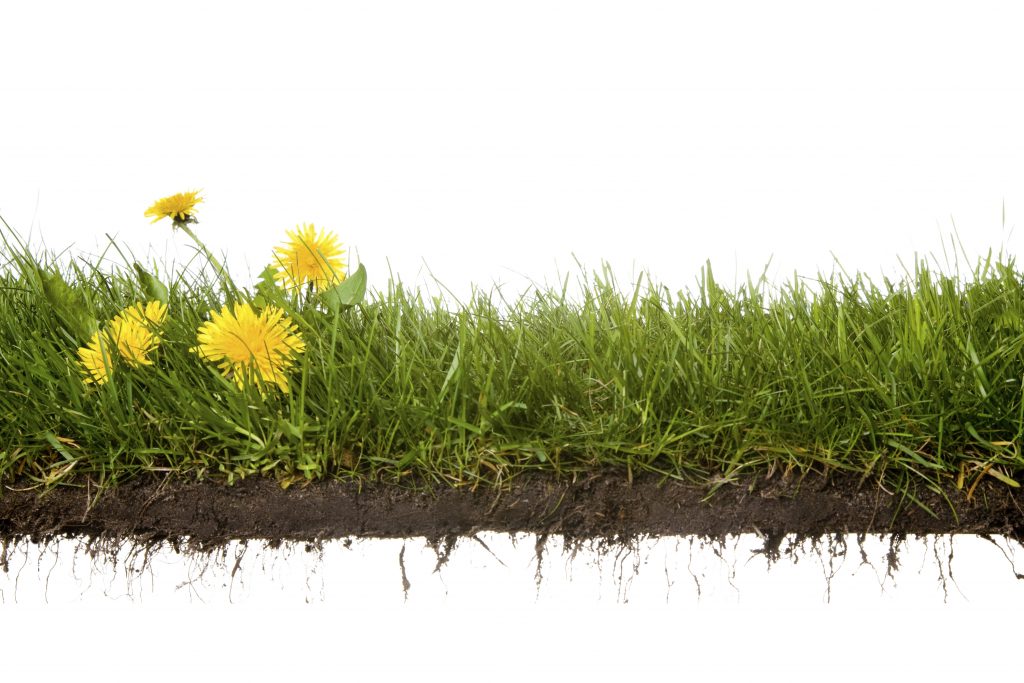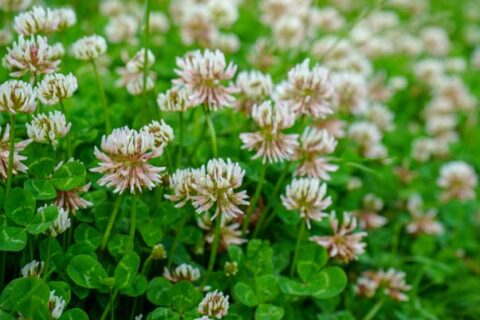What are those weeds in your lawn?

Broadleaf weeds can make a lawn look unsightly, and broadleaf weed killer is an easy short-term fix to rid your lawn of infestations. But it’s critical to understand how broadleaf weed control works, when it should be used and what to expect when it is applied. It’s not always as simple as running to your local hardware store, buying a bottle of weed control, and emptying the canister onto your lawn.
There are three types of weeds: broadleaf weeds, grassy weeds, and sedges. How you deal with each differ. For example, at first glance, you might think crabgrass is a weed like any other. But it’s actually much different than other weeds. We apply broadleaf weed control during each contracted visit when it’s safe for your lawn.
Broadleaf weeds
There are countless types of broadleaf weeds. These can be categorized into winter, summer, and annual. Winter annuals germinate in late summer and grow through the fall. They then continue to grow the following spring. Summer annuals begin to germinate as soon as the soil begins to warm up in the spring, and they grow throughout the growing season. Their life cycle is one growing season; although they can be perennial or biennials. Finally, perennials are never-ending headaches that can reproduce through extensive root systems or by seed. Here’s a common, but not extensive, list of broadleaf weeds you may see in your lawn:
- Dandelions
- Plantain
- White clover
- Chickweed
- Prostrate (spotted) spurge
- Knotweed
- Wild violets & ground ivy
- Ragweed
- Texas ragwort
Broadleaf weed killer can control these weeds and dozens more not listed here. However, each weed reacts to weed control differently depending on its type and the time of year it’s sprayed. For example, it’s recommended to attack ground ivy—also known as Creeping Charlie—in the spring and in the fall; although we’ve found that it’s responds best to weed control in the fall. A summer application will have little to no effect because the ivy isn’t actively growing; we’ve found it only burns the leaves and turn them white. But the weed itself is mostly not affected. In the fall, the broadleaf weed control will have a better chance of translocating to the ivy’s roots, suppressing growth and eventually killing the weed. The one thing to keep in mind is that if ivy is present in flower beds, it can continue to creep out into the lawn.
Broadleaf weeds should only be sprayed when they’re actively growing. And, to prevent turf injury, applications should not be applied when temperatures are too hot or humid, or the UV index is high.
Grassy weeds
Grassy weeds are as they sound…plants that resemble their counterparts but can be more invasive, damaging, and unsightly. Grassy weeds emerge as one leaf from a single grass seed. Some, such as quackgrass, are perennial, while others, such as crabgrass, are annual. Grassy weeds develop round stems, which are hollow, and nodes, which are closed and firm.
Regular broadleaf weed control, which typically contains the active ingredient 2-4D, will not work on grassy weeds. You’ll need specialized herbicides to kill or at least manage them. And it’s likely to take multiple applications or seasons to get them under control.
Keep in mind: Grassy weeds aren’t the same as broadleaf weeds. In fact, what some people consider ‘grassy weeds’ aren’t considered ‘weeds’ at all depending on where and how they’re planted. For example, creeping bentgrass is usually considered an undesirable grass in lawns because it looks unsightly and sticks out. But it’s often a desirable grass on golf courses. In this blog post, we’ll consider most grasses that aren’t your typical desirable grasses (e.g., kentucky blue grass, tall fescue, and rye grass) as non-desirable grassy weeds. These can include:
- Crabgrass
- Tall fescue
- Creeping bentgrass
- Bentgrass
- Annual bluegrass
- Quackgrass
- Goosegrass
- Wild onion
- Dallisgrass
It’s also important to consider the weather. Some grassy weeds, like crabgrass, emerge in mid-summer when it can be too hot and humid to apply any kind of herbicide to lawns.
Sedges
Sedge weeds are different than weedy grasses and broadleaf weeds. They’re easily distinguishable by their blades, which have three-sides, and by how quickly they grow compared to surrounding turf. The easiest way to remember the difference between a sedge and a grass is by the phrase “sedges have edges.”
Sedges have one, embryonic first leaf that emerges from a seed. However, similar to grassy weeds, sedges form in clumps. What makes sedges so difficult and sometimes impossible to eradicate is their deep root system (either rhizomes or tubers). These can extend a foot or more beneath the soil.
There are different types of sedges, but the two you’ll most often see are purple and yellow nutsedge. These typically spread underground via what’s called ‘rhizomes.’ New plants may spread upwards of 10 feet away, which can make infestations especially problematic. While there are herbicides that can kill nutsedge, there are caveats. Lawns that are completely infested with sedge may have to be redone. If this is the case, all tubers must be removed or the sedge could return. Typical broadleaf weed control will not kill sedges.
Our lawn care fertilizer and weed control services care for residential and commercial properties in parts of Norfolk and Bristol County, Massachusetts. Towns include: Foxborough, Mansfield, Wrentham, Walpole, Plainville, Franklin, Norfolk, Stoughton, Sharon, Canton, North Attleborough, Attleborough, Easton and Norton, and parts of Medfield, Medway & Millis. Learn more about our Complete Lawn Care program.
Your trusted lawn care provider and lawn pest exterminator
We Service Areas of Norfolk and Bristol County, Massachusetts Including, Foxborough, Mansfield, Wrentham, Walpole, Plainville, Franklin, Norfolk, Sharon, North Attleborough, and Parts of Attleboro, Stoughton, Canton, Norwood, Norton and Medfield. Learn more about our Complete Lawn Care program.


